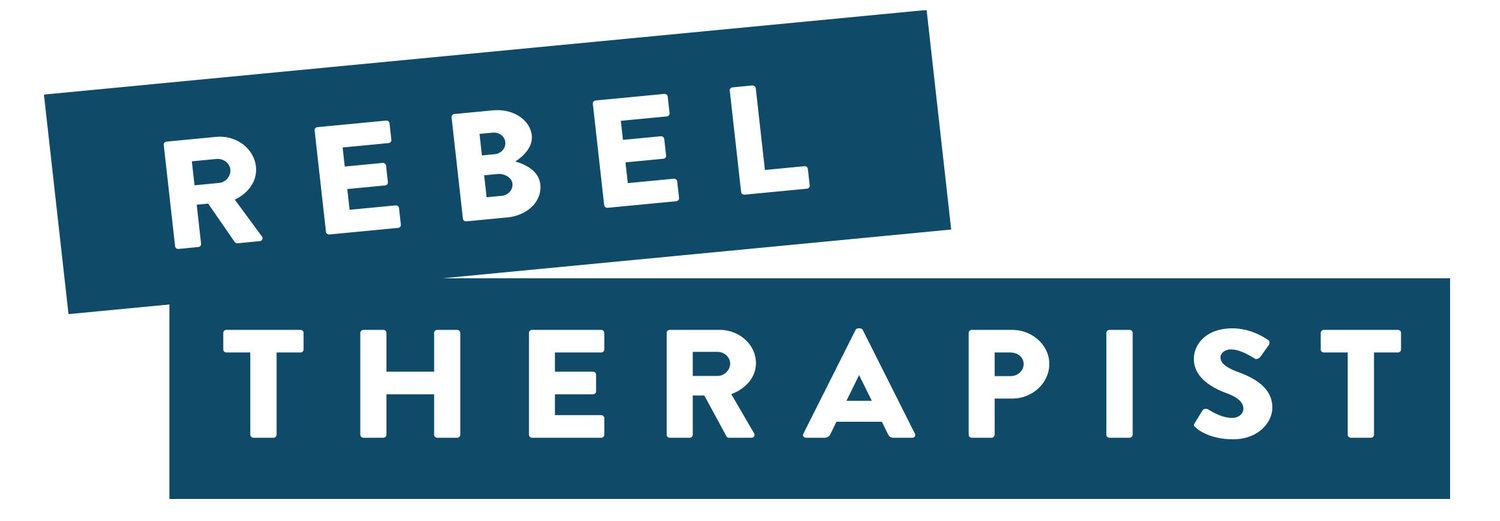In my last post I went through the first 2 keys to writing ridiculously effective pages for your website. Let’s tackle 4 more. First, here's the whole list.
- Identify your Superpowers
- Find your authentic writing style
- Write to a person (or a small group of people)
- Identify their pain
- Identify their hope
- Express what you believe about therapy
- Make each page simple
- Use headlines, not greetings
- Give a clear call to action
- Create a logical structure for your site
- Edit out any professional jargon
Now I’ll focus on the keys 3 through 6.
Write to a person (or a small group of people)
You’re trying to speak to everyone and you have to cut it out. When you write to everyone, you reach no one.
You invite an entire imaginary committee into your head as you write your website. You’ve got past clients, current clients, imaginary future clients, colleagues, mentors, family, friends, and even frenemies, all in your head, voicing their opinions about everything you write. You’re trying to please all of them and offend none of them.
You’ve got to write to a person or a very small group of people every time you write, and you’ve got to be willing NOT to please everyone else.
It’s ok if some of your friends or family members read your site and say “this site would really put me off.”
When my mother looked at my therapy site with its mention of “cutting edge therapy,” she said it would scare her away. That’s ok! She is different from my right-fit client. My center works with couples in the Bay Area who insist on the cutting edge for just about everything in their lives. My mom lives in a small town in Wisconsin, and she’d be looking for a different therapist.
Please ask your committee to leave your head. Instead, try writing to just one person or a very small group. In my Superpower program I take you through an in depth process called “the right-fit client exercise” to identify exactly who you need to be speaking to and how to speak their language. In that process, you choose actual people to design your business around and write your web copy for.
You may worry that you risk limiting yourself and excluding important potential clients if you get too specific.
That’s not likely. You are at risk though: for standing out. (See what I did there?)
Once you’ve figured out exactly who you’re writing to, and you’ve kicked everyone less helpful out of your head, you can try the next keys.
Identify their pain
Your right-fit client is asking: Does this therapist understand what I’m struggling with?
Write down what your right-fit client is struggling with. Don’t name every problem you can think of. Choose the things they are most distressed about when they choose to call you.
Describe that struggle in the words the client would use.
Let’s imagine a client named Becca. She’s in the middle of a break up and she’s in a depressive episode for the first time in her life. She’s feeling alone and hopeless.
Becca looks at 2 websites.
Website A names depression among a long list of other issues and then focuses on the methods the therapist uses. Becca may keep searching and plan to come back later.
Website B talks about about what depression feels like and gets it right. Becca may go ahead and take the next step to make an appointment.
Take some time to sit with and write about the pain your right-fit client experiences when they are getting ready to make their first appointment with you. Use the words they would be likely to use.
Identify their hope
What’s on the other side of therapy? If the pain you’ve described is the before, what’s the after?
We’ll use Becca and her depression as our example again. If she’s struggling with depression now, what’s the hope? It’s not just a lack of depression.
Maybe she hopes to feel alive again. Maybe she hopes to enjoy the simple moments of life that feel flat for her right now. Maybe she hopes to find motivation to get important things done.
Think about the people you’ve helped work through their pain and come out the other side. Write about the relief your work brought them.
Never oversell or guarantee results. Describe what is likely and possible.
Express what you believe about therapy
You’ve got strong opinions about therapy. You’ve got stuff to say about why therapy works and how your clients get better. Grab your laptop and write about one of those beliefs. This doesn’t have to be ground-breaking, and you don’t have to be the only person who holds this belief. Brene Brown wasn’t the first person who thought vulnerability was an important aspect of mental health. (Not that you have to be as compelling as Brene Brown. You really don’t.)
Make it simple and focus on one belief or opinion rather than several.
For example, perhaps you believe that one key to recovering from depression and awakening health is to speak one’s truth. In therapy, you give a lot of attention to helping your clients find and speak their truth. Name that.
I’m not done! Next time I’ll cover the final keys. If you ignore the last 5 keys, your copy might be pretty terrible. That’s not a scare tactic. I’m telling you because I love you and I want you to reach the clients who need you.
You read this far, so let me ask, do you want more free and helpful stuff from me? Sign up below and I’ll drop a new resource or article in your inbox each week.



